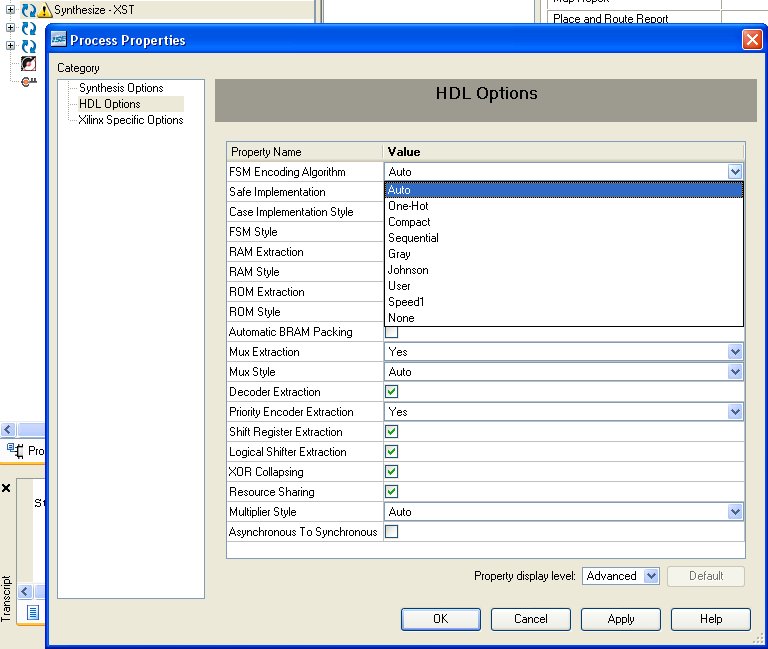A
Amit
hello group,
I have written two small vhdl code and now I am asked the following
questions, please just point where I can find some reading about it to
answer them. (I am using xilinx ise)
regards,
amit
Different synthesis tools use different styles to synthesize the state
machines.
Whatstyle does XST use to synthesize the state machine that you
coded?
Is there any way to force the tool to use specific options for
synthesizing state machines?
I have written two small vhdl code and now I am asked the following
questions, please just point where I can find some reading about it to
answer them. (I am using xilinx ise)
regards,
amit
Different synthesis tools use different styles to synthesize the state
machines.
Whatstyle does XST use to synthesize the state machine that you
coded?
Is there any way to force the tool to use specific options for
synthesizing state machines?

